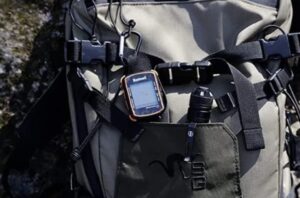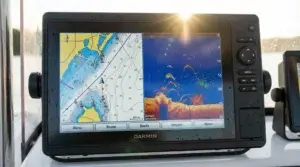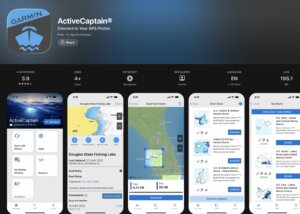Let’s look at how to track cell phone locations without GPS.
Tracking cell phone locations without relying on GPS can seem a bit like trying to find a needle in a haystack, but with today’s tech, it’s more feasible than most people realize. GPS might be the go-to for pinpoint accuracy, but it’s not the only player in the game. Technology offers a handful of alternatives, each with its unique way of getting the job done.
At its core, location tracking without GPS involves using data from various sources like cell towers, Wi-Fi networks, Bluetooth signals, and more. These methods can fill the gap when GPS can’t be used or isn’t precise enough. It’s always fascinating to see how these technologies blend to form a cohesive tracking system, something that was unthinkable just a few decades ago.
While the technology is impressive, it’s crucial to discuss the ethical implications. Tracking someone’s phone without consent raises privacy issues. Always remember that that what’s simple for tech can be complex when it comes to human rights and legalities.
Ethical considerations and understanding your intent are necessary steps before forging ahead. Being informed about what you’re doing and respecting legal boundaries isn’t just a smart choice; it’s the right choice. With this technology comes the responsibility to use it wisely and ethically, communicating openly with anyone you track whenever possible.
Using Cell Tower Triangulation for Location Tracking
When GPS isn’t in use, cell tower triangulation plays a significant role in tracking a cell phone. This method relies on signals from phone towers strategically positioned throughout an area. When a cell phone is on, it constantly communicates with nearby towers, even if you’re not making a call. By checking which towers a phone connects to and measuring the signal’s travel time to each tower, it’s possible to estimate the phone’s position.
While it sounds straightforward, there are a few things to keep in mind. The accuracy of this method can vary greatly depending on several factors, like the density of cell towers in the area and environmental obstacles like buildings or mountains. Rural areas might not offer the same precision as urban settings with nearby towers.
With these benefits come concerns. One of the most significant issues is privacy. Not everyone realizes their device is pinging off cell towers all the time. It’s like your phone is leaving a digital breadcrumb trail as you move around. Being mindful of privacy regulations is essential when choosing to use this tracking mUnderstandingtanding its limitations and the context it’s best suited for is if you’re considering using triangulationcrucial. Not every situation will benefit from this method alone, so combining it with other technologies can provide more accurate results. This approach respects the legal framework and ensures that you get the most reliable data.
Wi-Fi Positioning System (WPS): An Alternative Approach
In the world of location tracking without GPS, Wi-Fi Positioning System (WPS) stands out as a practical solution. This method uses the signals from nearby Wi-Fi networks to determine a device’s location. It’s particularly handy in urban environments, where Wi-Fi networks are plentiful and can offer a high level of accuracy.
The magic behind WPS lies in its ability to tap into signal strength and unique identifiers (like MAC addresses) broadcasted by surrounding Wi-Fi access points. By analyzing these factors, it can pinpoint where a device is located. It’s like using ambient signals in the air to sketch a location map on the fly.
One of the main advantages of WPS over GPS is its reliability indoors. While GPS struggles inside buildings, Wi-Fi signals can cover large indoor areas with consistent accuracy. This capability makes WPS ideal for use in places like shopping malls, airports, and office buildings, where GPS might falter.
Comparing WPS with GPS, Wi-Fi positioning offers competitive accuracy under the right conditions and often uses less battery power, a beneficial aspect for any mobile device. But it’s not without its downsides. Wi-Fi coverage isn’t uniform everywhere, and the availability of networks can affect accuracy.
Using WPS responsibly means being aware of similar privacy concerns as in other non-GPS tracking methods. Being transparent with users, especially in commercial applications, ensures trust and compliance with regulations. Understanding these aspects allows you to leverage the full potential of Wi-Fi tracking while remaining ethical and respectful of privacy boundaries.
Bluetooth and RFID: Innovative Short-Range Tracking Methods
Bluetooth and RFID technology offer intriguing ways to track cell phones, especially in scenarios where proximity matters. These methods involve utilizing short-range communication to determine a device’s presence or location.
Bluetooth works by connecting devices within a close range, typically within a few meters. In tracking, Bluetooth can help monitor if a person enters or leaves a specific zone. This method is common in smart home setups or retail environments where personalized engagements are desired.
RFID, or Radio Frequency Identification, uses tags and readers to track objects. With cell phones, RFID can register when a device crosses a point where a reader is installed. While it’s not tracking in the traditional sense, it provides useful data about device movement across specific thresholds.
A significant advantage of Bluetooth and RFID is their low power consumption, which makes them suitable for sustained use without quickly draining device batteries. They offer a reliable alternative to GPS when you need to track objects or individuals within confined spaces.
However, these technologies require specific infrastructure, like Bluetooth beacons or RFID readers, to function effectively. This need for infrastructure can limit their application compared to more pervasive methods like GPS or Wi-Fi positioning.
Implementing Bluetooth and RFID tracking ethically requires consent and clarity about data usage. Users should know precisely what information is collected and how it’s utilized. Establishing clear communication will ensure trust and satisfaction, making the tech beneficial for everyone involved.
Advanced Technologies: Sensor-Based Tracking Systems
Tracking through sensors is where things get a bit futuristic. These systems use accelerometers, gyroscopes, and other sensor-based technologies in your device to infer its location. Instead of depending on external signals, these sensors gauge how the phone is moving, its direction, and its speed to help estimate its position.
One of the standout benefits is independence from external signals, meaning these methods work well when GPS and Wi-Fi signal strengths are poor or unavailable. It’s fascinating how a blend of gravitational data and motion sensors can offer insights into a device’s journey and location.
Yet, no method is perfect. Sensor-based tracking can sometimes lose accuracy over time as minor errors accumulate. It requires recalibration and might need to be combined with other tracking data to maintain accuracy. Think of it as another piece of the puzzle, helping to draw a more complete picture of device location.
That’s why sensor technology often complements other tracking systems. When combined, such as with cell tower data or Wi-Fi information, it bolsters overall tracking abilities, making up for each technology’s individual shortcomings.
For ethical use, transparency with users is crucial. Before diving into sensor-based tracking, explain the purpose and scope. Such upfront communication is necessary for building a foundation of trust with your audience, ensuring the technology is used responsibly and effectively.
Ethical and Legal Implications of Non-GPS Tracking
Navigating the ethical and legal landscape of non-GPS tracking technologies is no small feat. It requires balancing innovative practices with individual rights and legal mandates. Unfortunately, while the technology progresses rapidly, laws and regulations sometimes lag, creating a gray area for users and providers.
Privacy is a key concern with any form of location tracking. Whether using Wi-Fi signals, Bluetooth, or sensor data, the potential for misuse is always present. Users should be aware of what data is collected, how it’s used, and with whom it’s shared. Transparency is more than a courtesy; it’s an ethical obligation.
Legal regulations vary widely across regions and can be quite strict regarding consent and data protection. Understanding these laws is crucial for anyone involved in deploying tracking technologies. Ignorance or non-compliance can lead to hefty fines or, worse, a loss of public trust.
Practically speaking, obtaining clear consent from users covers several bases. It shows respect for their privacy and safeguards you against legal repercussions. Clear privacy policies, regular audits, and robust security measures are part of a responsible approach to implementing tracking solutions.
Ultimately, the goal is to use technology to enhance lives without compromising privacy and rights. By staying informed and acting ethically, you can leverage non-GPS tracking in a way that respects individuals and follows the spirit, as well as the letter, of the law.
As an Amazon Associate I earn from qualifying purchases.











Hi there, I came across your article about tracking cell phone locations without GPS, and I found the information really intriguing! It’s great that you’ve outlined alternative methods like network-based tracking, Wi-Fi positioning, Bluetooth beacons, IMEI tracking, and Find My Device services. These insights are super useful for people who might need solutions in areas where GPS signals are unreliable or unavailable.
That said, how can individuals ensure that these alternative tracking methods, such as network-based tracking or IMEI tracking, are used responsibly and in compliance with privacy laws? What safeguards or best practices would you recommend to prevent unauthorized use of technologies like Wi-Fi positioning or Bluetooth beacons for tracking purposes?
Hi there.
Thank you for your kind words! I’m glad you found the article informative and the alternative methods intriguing. You’ve raised an excellent point about the responsible use of these technologies and ensuring compliance with privacy laws.
To use alternative tracking methods like network-based tracking or IMEI tracking responsibly, it’s essential to adhere to the following safeguards and best practices:
Obtain Consent: Always ensure you have explicit consent from the individual being tracked, whether through network-based tracking, IMEI tracking, or other methods. Transparency is key.
Follow Legal Guidelines: Familiarize yourself with local and international privacy laws, such as GDPR, CCPA, or other regulations, to ensure your use of these technologies aligns with legal requirements.
Limit Data Access: Restrict access to tracking data to authorized personnel only and ensure the data is used solely for its intended purpose. Implement strong data protection measures to prevent breaches.
Anonymize Data When Possible: If aggregate data is being used for analytics or research, remove personal identifiers to protect individual privacy.
Educate Users: If you develop or offer services that utilize these tracking methods, provide clear guidelines and user education on how the technology works and the importance of responsible use.
Utilize Technology Safeguards: Implement safeguards such as encryption, access logs, and monitoring to detect and prevent the unauthorized use of tracking methods such as Wi-Fi positioning or Bluetooth beacons.
By combining these practices, we can effectively use these technologies while respecting individual privacy and ensuring ethical use. Thank you for highlighting such an important aspect of this topic. If you have further questions or thoughts, feel free to share.
Questions on the Topic or Overall Article
How accurate is cell tower triangulation in remote areas compared to urban locations?
What steps are being taken to improve the privacy concerns surrounding non-GPS tracking technologies?
Are there any hybrid systems that combine multiple tracking methods (like Wi-Fi, Bluetooth, and sensor data) into one seamless system?
Discussion About the TopicThe idea of tracking a phone without GPS is fascinating, especially when considering how essential GPS has become in our daily lives. The use of alternative methods like Wi-Fi positioning, cell tower triangulation, and sensor-based systems highlights how technology has advanced. Each method has its strengths and limitations, which makes combining them a smart approach for better accuracy and reliability. However, this also brings up serious concerns about privacy and consent. As these technologies evolve, it’s important to maintain a balance between innovation and ethical considerations.
Offer Experience with the TopicWhile I haven’t directly used non-GPS tracking technologies, I’ve seen how critical location tracking can be in emergencies or research situations, like while exploring remote areas. In my writing about Bigfoot expeditions, for example, reliable tracking systems are essential. Understanding non-GPS options could be invaluable in regions with poor GPS signals. Wi-Fi positioning or sensor-based tracking might be a great addition to these tools.
Opinion About the TopicThe potential of non-GPS tracking is remarkable, especially in places where GPS signals are unreliable. Wi-Fi positioning in urban environments or sensor-based tracking in signal-deprived areas could open up new possibilities for navigation, research, and security. However, the ethical and legal implications cannot be ignored. Transparency, clear consent, and respect for user privacy must remain at the forefront. It’s exciting to see where this technology will lead, but it’s a journey that must be guided by responsibility and integrity.
Cell tower triangulation tends to be less accurate in remote areas due to the lower density of cell towers. In urban locations, the high concentration of towers allows for more precise triangulation, often within a range of a few meters. Conversely, in remote areas, where towers may be spaced miles apart, accuracy can decrease significantly, with errors ranging from hundreds of meters to kilometers.Privacy concerns are being addressed through legislation like the General Data Protection Regulation (GDPR) and increased emphasis on user consent. Companies are adopting measures like anonymizing data, securing transmission protocols, and allowing users to opt-out of non-GPS tracking systems. Furthermore, researchers are exploring decentralized systems where data processing occurs on the device rather than on external servers, minimizing the risk of misuse.Yes, hybrid systems are increasingly being developed to enhance accuracy and reliability. For example, Apple’s “Find My” network leverages Bluetooth signals, Wi-Fi positioning, and crowd-sourced device data to locate devices without GPS. Similarly, sensor fusion techniques combine data from accelerometers, gyroscopes, and barometers with Wi-Fi and cell tower signals to improve location tracking, particularly in GPS-deprived areas.
This article provides a thorough exploration of non-GPS tracking methods, which is fascinating given how reliant we’ve become on GPS for everyday navigation. I appreciate the discussion about ethical implications, as privacy concerns are often overlooked when discussing advanced technologies.
Personally, I’ve seen how Wi-Fi and Bluetooth tracking are increasingly utilized in retail spaces for customer engagement, but I hadn’t considered their potential in scenarios like indoor navigation or areas where GPS struggles.
It’s clear that combining these methods can offer greater accuracy, but the ethical and legal considerations are vital. I’d love to hear others’ experiences or thoughts on balancing technological advancements with privacy concerns—especially in contexts like commercial applications or personal use. How do you approach ensuring transparency and consent?
Thank you for sharing your insights! You’re absolutely right—while non-GPS tracking methods like Wi-Fi and Bluetooth offer innovative solutions for areas where GPS falls short, the ethical implications, particularly around privacy, deserve more attention. It’s fascinating how these technologies are used in retail spaces for customer engagement, but their potential for indoor navigation and even emergency response scenarios is equally exciting.
When it comes to balancing advancements with privacy, transparency and consent are crucial. Clear communication about what data is being collected and how it’s used, as well as providing users with the option to opt in or out, is essential. For commercial applications, this could mean more straightforward privacy policies or on-screen prompts that explain data usage in real-time.
In personal use, I think it’s important to stay informed about the technology and choose devices or apps with robust privacy settings. How do you think businesses and developers can better address these concerns while maintaining the benefits of these tracking methods?
This was a very interesting post. I had no idea there were other tracking options for cell phones that were fairly accurate other than GPS. I can see how these other options such as, WPS, Bluetooth, RFID, and Sensor-based tracking could be of great benefit to law enforcement when investigating where a suspect was during a specific time that a crime was committed. I am just wondering if time stamp and location also work well together. Do you find that the time stamp and location work together fairly accurately for these other tracking options?
Thank you for your thoughtful comment! Yes, time stamps and location data can work quite well together across different tracking methods, but their accuracy depends on the technology used. For example, Wi-Fi Positioning System (WPS) can provide a decent location estimate if there are enough nearby access points, and the time stamp is generally reliable since it’s linked to network activity. Bluetooth and RFID, on the other hand, often depend on proximity to specific devices or tags, so their time-location pairing is precise but limited to small ranges. Sensor-based tracking, like accelerometers or gyroscopes, works best when combined with other data sources to enhance accuracy. Law enforcement can leverage these methods effectively, especially when GPS isn’t an option, but the reliability can vary depending on environmental factors and the available infrastructure. Great question!
“This article opened my eyes to alternative tracking methods I never considered! The idea of using cell towers and Wi-Fi triangulation instead of GPS is pretty fascinating—it makes me wonder how often our devices are giving away location data without us realizing it. Do you think these methods are accurate enough for emergency situations, like locating a lost phone in real time? I’d love to hear your thoughts!”
I’m glad you found the article insightful! Cell tower and Wi-Fi triangulation can be surprisingly accurate, especially in urban areas with lots of network density. While they may not always match GPS precision, they can still be crucial in emergency situations—helping locate lost phones or even aiding search and rescue efforts. That said, factors like signal strength, building interference, and available infrastructure can impact accuracy. It’s definitely eye-opening to realize how much location data our devices share without us noticing! Do you think privacy concerns outweigh the benefits of these tracking methods?
Hey there!
Fascinating read! I had no idea there were so many ways to track a cell phone without relying on GPS. Your step-by-step explanations made it easy to follow, especially for someone like me who isn’t super tech-savvy. The ethical considerations you mentioned are also an important reminder—this kind of technology should always be used responsibly. Thanks for sharing such valuable information. I’ll be bookmarking this for future reference!
Marios
Hey Marios!
I’m so glad you found the article fascinating and easy to follow! It’s always great to hear that the explanations were helpful, especially for those who aren’t super tech-savvy. And yes, the ethical side of this technology is crucial—it’s important to use it responsibly.
Thanks for your thoughtful comment, and I appreciate the bookmark! Let me know if you ever have any questions.
Best,
Andrejs
I had no idea there were so many alternative technologies cell tower triangulation, Wi-Fi positioning, Bluetooth, RFID, and even motion sensors that can be used to estimate a phone’s location. The explanations are clear and informative, making complex tech feel surprisingly accessible. I also really appreciate the balanced tone of the piece, especially the emphasis on privacy, consent, and ethical use. It’s refreshing to see a tech article that not only highlights innovation but also encourages responsible usage. The section on combining methods for better accuracy was especially insightful
Thanks so much for your thoughtful comment! I’m really glad the explanations helped make the tech feel more approachable—it’s fascinating how many tools beyond GPS can be used for location tracking. And yes, striking that balance between innovation and ethical responsibility is so important, especially with how personal location data can be. I’m especially happy to hear you found the section on combining methods useful—it’s an area where the tech really gets smart. Appreciate you taking the time to share your thoughts!
This was super eye-opening. I had no idea there were so many ways to track a phone without GPS… It’s both impressive and a little unnerving, honestly. Thanks for breaking it down in such a straightforward way. Just curious, what’s your take on the ethical line here? Like, when does tracking shift from practical to intrusive?
Would you say it’s a bit like a good-guy-with-gun / bad-guy-with-gun situation?
Absolutely, I think that’s a really thoughtful way to frame it. The tech itself is neutral—like a tool—and it all comes down to who’s using it and why. Used ethically, tracking can be lifesaving—think search and rescue missions or helping parents keep their kids safe. But in the wrong hands, or without consent, it quickly crosses into invasive territory.
So yeah, kind of like the good-guy-with-a-gun analogy: it’s all about intent and oversight. The tricky part is that the line between “practical” and “intrusive” can get blurry fast, especially when convenience and security are used to justify surveillance. Transparency and clear boundaries are key.
Thanks for sparking such a great conversation!